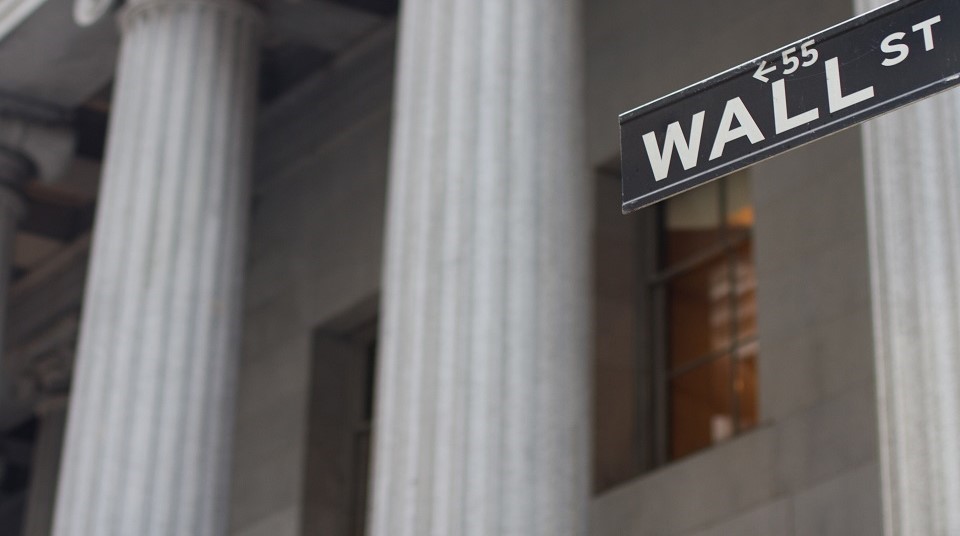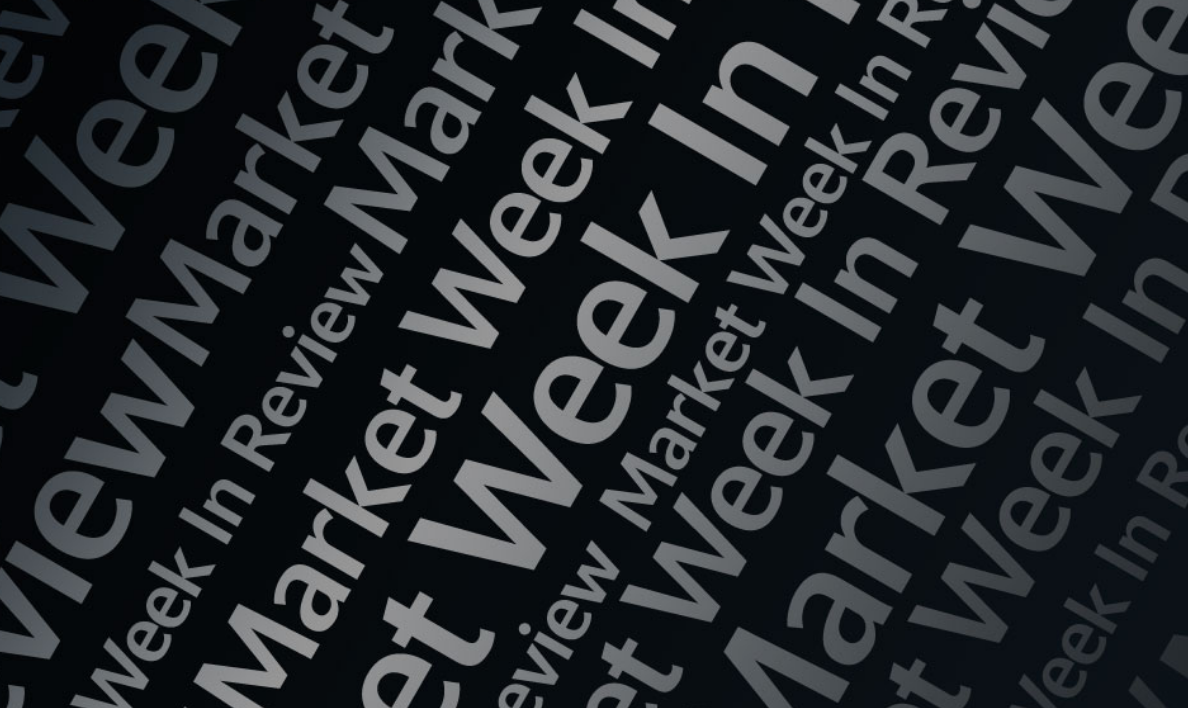by Liz Ann Sonders, Senior Vice President, Chief Investment Strategist, Charles Schwab & Co
Key Points
- COVID-19-relevant leading indicators are painting a bleak economic picture.
- Murkiness in the outlook has resulted in an incredibly wide (and dour) outlook for second quarter real GDP.
- Beyond the obvious short-term implications of COVID-19 and its economic impact, there are longe r-term secular changes likely coming.
I participated in a Reuters Twitter Chat for an hour last week—one of the fastest-paced hours I’ve ever spent on Twitter. One of the initially-posted questions was whether we felt the COVID-19-related contraction in the economy would ultimately be declared a recession or a depression. I replied that we may need a new descriptor this time—perhaps a “screeching halt” (by government mandate or “fiat”). Even though we likely aren’t yet in the teeth of hit to the economy, the data over the past week have been epically horrific.
Woe is WEI
The New York Fed recently created a “Weekly Economic Index” (WEI), using 10 leading indicators specifically geared toward analyzing the current COVID-19 economy in real time:
- Redbook Research: same-store retail sales average
- Unemployment insurance: initial claims, state programs
- American Staffing Association Staffing Index
- Rasmussen Consumer Index
- Raw steel production
- Electric utility output: Unites States ex. Hawaii and Alaska
- U.S. fuel sales to end users
- Continuing unemployment insurance claims
- Railroad traffic
- Federal taxes withheld
As you can see in the chart below, the WEI has plunged to a level significantly worse than what was experienced during the Global Financial Crisis (GFC).
WEI Plunged to GFC Territory

Source: Charles Schwab, as of 3/28/2020. Daniel Lewis, Karel Mertens, and Jim Stock, “Monitoring Real Activity in Real Time: The Weekly Economic Index,” Federal Reserve Bank of New York Liberty Street Economics.
Laboring over labor data
When initial unemployment claims were released on March 26, it was reported that 3.3 million Americans filed for unemployment insurance. Last week topped that in a significant way, with an additional 6.6 million filers. That brought the two-week total to nearly 10 million workers having lost their jobs. You can see how unprecedented this is in the chart below. Barely noticeable now—courtesy of the magnitude of the recent increase—the prior largest single week of claims was just under 700k in 1982.
Claims Straight Up

Source: Charles Schwab, Bloomberg, as of 3/28/2020.
We are starting the process of calculating cumulative initial unemployment claims so we can put the magnitude and duration into historical context. As you can see below, we are likely only one month into a recession; but have already hit the 10 million claims mark. The chart below shows that recessions have historically taken claims to as high as 40 million—but in both cases (early 1980’s and GFC eras) we only hit that level after at least 16 months of recession. At the current pace, we are on track to breach those levels in much shorter order.
History of Claims in Recessions

Source: Charles Schwab, Bloomberg, as of 3/28/2020.
Following last Thursday’s claims report was the March labor report, released on Friday. Although the data was only through March 12—leading economists to estimate a mere 100k job losses—there was already enough of a hit, with nonfarm payrolls declining by 701k (the most since March 2009), as you can see in the chart below. In addition, the unemployment rate soared from 3.5% to 4.4%, the largest monthly jump since January 1975. If you do a little simple math and add the 10 million initial unemployment claims to the number of unemployed in March, it would bring the unemployment rate to 10.5%, which would be the highest since 1982—even higher than the peak during the GFC.
Payrolls Imploding

Source: Charles Schwab, Bloomberg, as of 3/31/2020.
Almost no sector spared
The shutdown of broad swaths of the economy amid social distancing guidelines has hit both the services and consumer sides of the economy—and both supply and demand. The loss of payrolls was widespread; but weighted toward leisure and hospitality (mostly restaurants and bars), which contracted by a record 459k payrolls—offsetting every job gain in that industry since November 2018. Other areas hit were health care (non-COVID-19-related) and social assistance jobs, professional and business services, retail trade, construction, manufacturing and mining. Not much was spared, other than utilities, information and government jobs (the latter being boosted by the hiring of Census workers). The chart below shows the current breakdown of nonfarm payrolls by sector.
Payrolls by Economic Sector

Source: Charles Schwab, Bureau of Labor Statistics, as of 3/31/2020.
Several Wall Street firms’ economics departments have started publishing estimates for next month’s payrolls; with estimates as dire as an additional loss of nearly 28 million jobs—and that’s just for April. Strategas Research Partners highlighted the economic math: After the GFC, U.S. payrolls bottomed around 130 million. Payrolls peaked in February 2020 at 152.5 million, before falling to 151.8 million last month. If the recent pattern holds and claims continue to be similarly-dire, we are about two weeks away from erasing all the jobs gained in the past decade. U.S. real gross domestic product (GDP) was about $15 trillion in 2010 and was set to be about $22 trillion in 2020 before the shutdown. That means a difference of roughly -30% if we erase a decade.
In the table below, you can see the payroll estimates for those firms we’ve tracked which have published estimates; alongside the full roster of second quarter 2020 real GDP estimates (quarter/quarter at an annualized rate). It’s almost like a game of The Price is Right—with economists “competing” with each other to publish the most dire forecast. Regardless of who is right, it’s going to be ugly. To put numbers like -50% in context, the peak-to-trough decline in real GDP during the GFC was 4% over a span of six quarters.

Source: Charles Schwab, as of 4/6/2020.
Pick a letter
It’s human nature to look ahead to brighter days—and it’s the “job” of markets to do the same. Regardless of the murkiness ahead, economists—of the professional and arm chair variety alike—are starting to assess the “shape” of the recovery. In a perfect world, once the economy starts to open back up, a “V” recovery would take hold. That may be wishful thinking other than for certain high-demand areas of the economy. For now, we are experiencing an “I” (straight down). Looking ahead, we may see a number of different letters; including “L” (think cruising perhaps), “W” (especially if we suffer COVID-19 setbacks/re-eruptions) or “M” (the dreaded upside-down “W”). But one letter may be the best one to illustrate the broad economy: “Y.”
A “Y” may be apt because there were already fault lines seen in the economy before the COVID-19-related economic implosion. More than one-third of Russell 2000 small-cap companies had negative pre-tax income, and more than 25% of companies with market caps above $10 billion had negative year/year earnings per share growth (hat tip: Hedgeye). In addition, manufacturing was already suffering recession-type weakness last year courtesy of the trade war and tariffs; and had only stabilized before the virus hit. Once the economy begins to open back up, we could experience a short-term surge in growth (especially in relative terms); but that’s unlikely to be sustained (hence the “Y” shape).
Households entered this in better shape, but now…
Optimists (and yes, I’m an eternal optimist) have pointed to the relative health of households compared to the GFC-era. Indeed, household debt as a share of disposable personal income (first chart below) has declined significantly since the debt bubble peak; and now sits below even the pre-housing bubble trendline. Related to that, households’ debt service ratio (second chart below) is historically-low; courtesy of lower debt levels, but also record-low interest rates.
Households Deleveraged During Past Decade

Source: Charles Schwab, FactSet, Federal Reserve, as of 12/31/2019.
Debt Servicing Costs Historically Low

Source: Charles Schwab, FactSet, Federal Reserve, as of 12/31/2019. Household service debt ratio is an estimate of ratio of required debt payments to disposable personal income. Required minimum payments of interest and principal on outstanding mortgage and consumer debt are included.
All is not rosy on the household front though. Clearly, we are in the midst of suffering one of the greatest hits to disposable personal income (the denominator of the equation in the chart above). Yes, the CARES Relief Act will help cushion the blow; but there are other more troubling statistics coming to light. A recent study has been making the rounds by Womply and AARP, showing that more than half of small businesses cannot survive a three month shutdown; while more than half of households have no emergency savings. The lasting emotional hit of the economic shutdown is likely to usher in a more frugal consumer—one that is more biased toward savings over consumption—another reason to be skeptical of a full-blown V-shaped recovery.
Longer-term implications
The economy is currently facing down its largest contraction since perhaps the Great Depression. For now, we are all mired in the short-term impact; but it’s also worth considering some of the longer-term impact (some of which should ultimately be beneficial to many):
- “Deglobalization” is a force unlikely to recede; particularly since it was already underway courtesy of the trade war and increased tariffs. One of the longer-term implications of that might be a higher level of inflation than we’ve become accustomed to.
- Health screenings will likely become a part of life—at airports, sporting events, and other large gatherings—akin to the ushering in of the TSA following 9/11.
- Deficits/debt will likely rise to even greater levels as a share of GDP that was imaginable before COVID-19. Little did we know that we’d enter a world where Modern Monetary Theory (MMT) went from a political platform to everyone’s reality.
- Corporate America was forced to react quickly to the economic shutdown—particularly with regard to remote working—possibly leading to structural adjustment to how they operate. Not only is the genie out of the bottle with regard to the ability of many to work remotely, video conferencing in place of some in-person meetings could change the nature and frequency of business travel.
- As noted, financial caution will likely persist—by households who may want to build a more consistent liquidity cushion, and by companies looking to shore up their balance sheets.
Most importantly, the hope is we begin to see a “bending of the curve” in the virus itself; so we can not only get back to some semblance of normalcy, but start to put the heartbreak of the past couple of months behind us. Be well.
Copyright © Charles Schwab & Co















